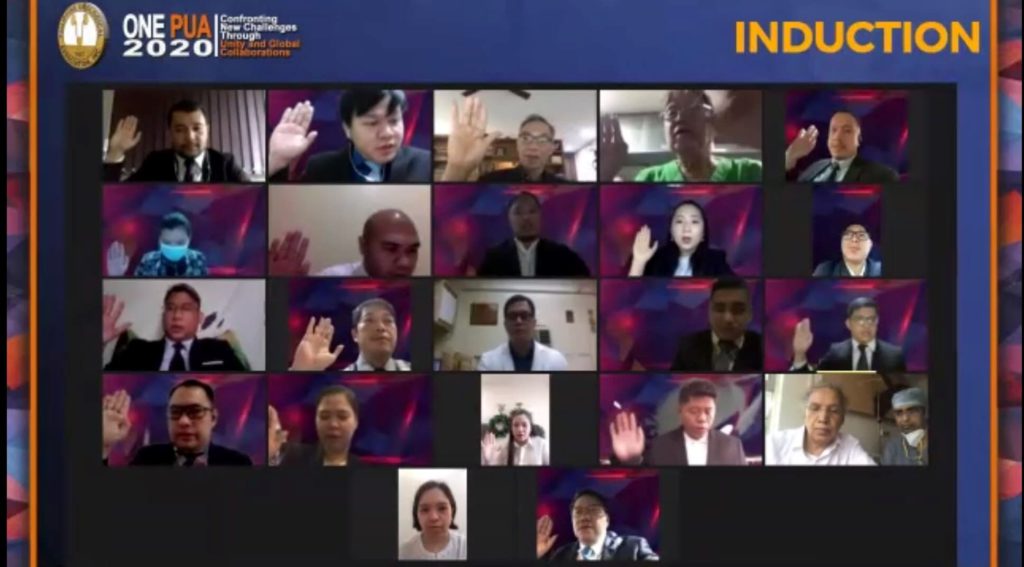
The 5th plenary session of the PUA annual convention 2020 kick off with Dr. Mark Abalajon giving a short introduction to the world-renowned reconstructive urologist from the different parts of the world. The first lecture was about the current role of Direct Vision Internal Urethrotomy (DVIU) and Self-dilatation in the Management of Urethral Strictures given by Dr. Venkatesan from USA. He started the discussion with the history of urethral stricture management and anatomy. The procedure being done, and the different techniques were also discussed. For him, he personally prefers doing dilatation over DVIU due to minimal trauma sustained w the former as compared to the latter. Even with that claim, he presented different studies showing the mediocre success rate of the different endoscopic procedures. Older studies claim to have 80% success rate but, with longer follow-up, it decreases to lower rate at 10-30%. More contemporary studies w a longer follow-up showed a lower success rate as highlighted by the study of Santucci in 2010. In this particular study, it showed urethrotomy success rate as low as 8%, median time to recurrence at 7 months, and a 4th urethrotomy having zero percent success rate. Also, being minimally invasive does not mean having low complication rate. He reiterated that 6.5% of cases had complication rate from endoscopic urethral procedures with erectile dysfunction and Incontinence being the most common. With the papers presented, he gave recommendations that could really help us in utilizing this kind of procedure. For him, indication for endoscopic procedures are for primary bulbar urethra of less than 1.5cm, recurrence after urethroplasty of less than 1cm, and those unfit for surgery. He concluded his talk with the possible direction of these endoscopic procedures such as DVIU with cellular slurry, Stem cell therapy, and the need for a better designed study using adjunct maneuvers.
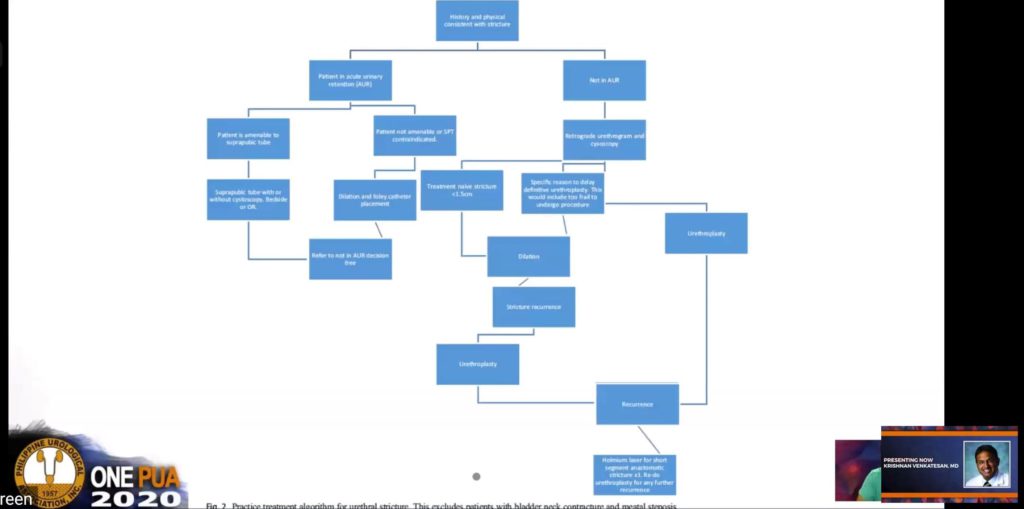
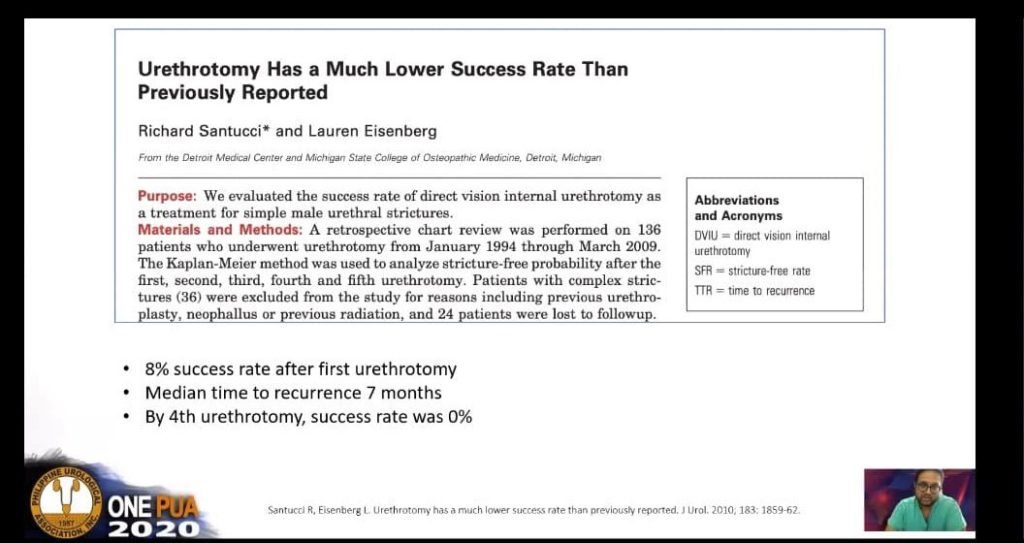
Another renowned reconstructive urologist, Dr. Justin Chee, gave a lecture about early endoscopic realignment (EER) vs delayed primary urethroplasty in the management of pelvic urethral injuries. A quote to start off this lecture was taken from the great Dr. Turner-Warnick which says, “….. It is the urologist who will have to share, with the patient, the burden of any residual urological disability when the thoracic, the abdominal, and even the orthopaedic aspects are probably long forgotten”. This particular phrase highlights what the urologist role to the patient which not a priority immediately, but takes center stage once all of the immediate problems are taken care of . Importance of the suprapubic cystostomy was also highlighted during the talk stating that it is still the first step in any pelvic trauma. This diversion would minimize trauma to the bladder neck preserving the incontinence of the patient. The highlight of this lecture was the role of endoscopic realignment in this type of injury. Even though it entails several factors for it to be effective, he cited multiple studies confirming its advantages. In one metanalysis, it showed less stricture rate compared to no realignment in 10 studies, also makes complex stricture simple, it avoids complex maneuvers such as pubectomy, and it does not increase risk of incontinence and erectile dysfunction. He also stated that EER is already supported by ICUD, AUA, and EAU. He concluded that EER is Safe (w no increase in ED or incontinence), it can be already be considered as a cause in 30% of patients, it makes delayed urethroplasty easier and more successful.
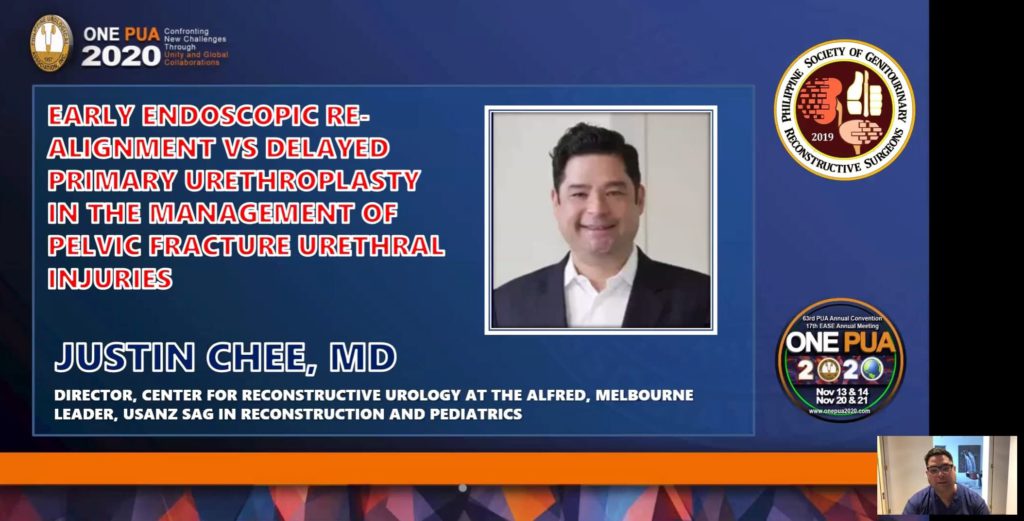
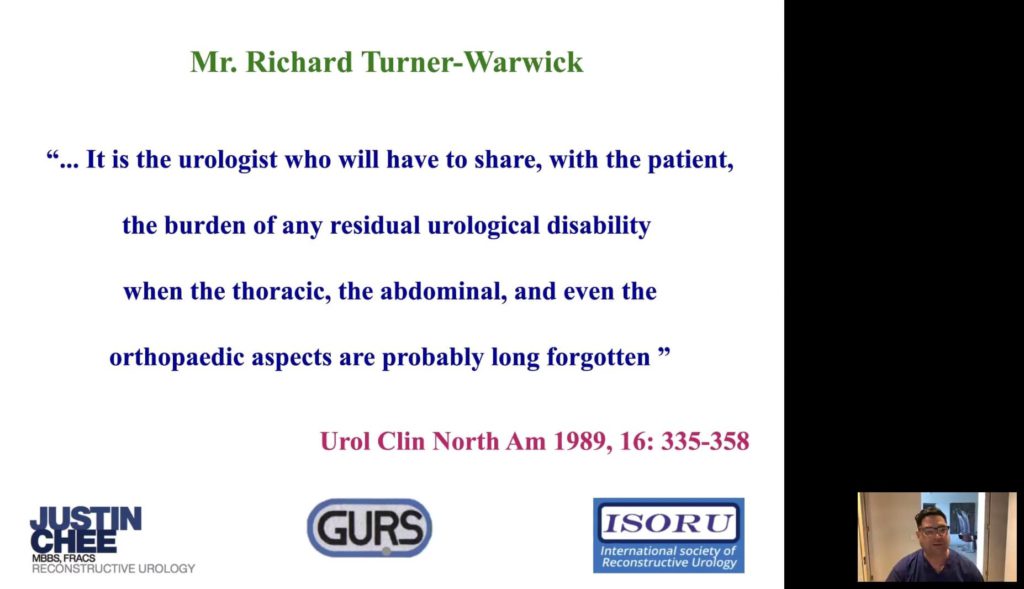
The next speakers were Dr. Kulkarni himself who gave a lecture about the pitfalls in buccal mucosal Graft Urethroplasty for Anterior Urethral Strictures: Avoidance and Management of complication and Dr. Joshi for Management of Complex and Redo Pelvic Fracture Urethral Injuries. They discussed cases and they reiterated the necessary diagnostics and techniques in these kinds of complex cases. Both lectures were highly complexed and technical but both speakers were able to explain it clearly showing that they are really the authorities in this field.
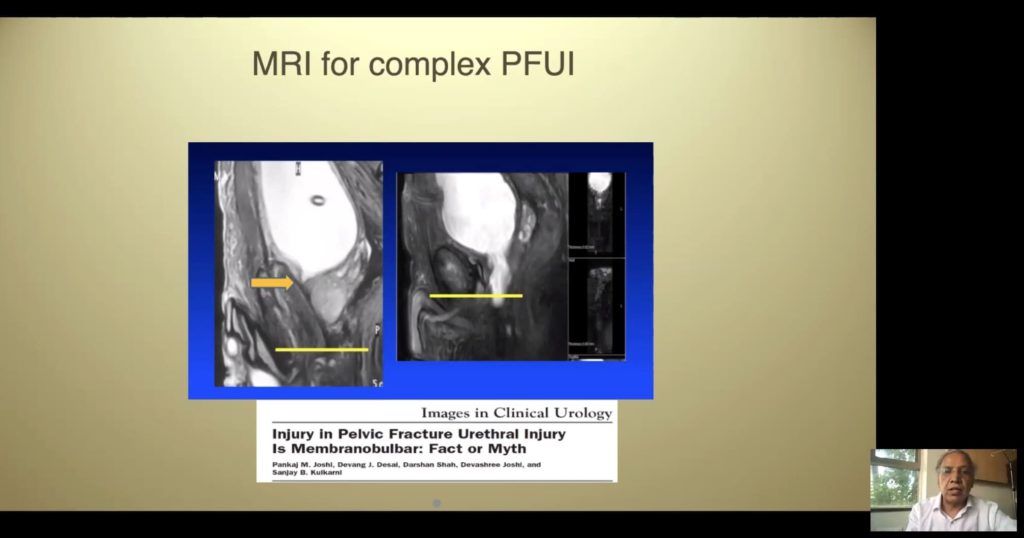
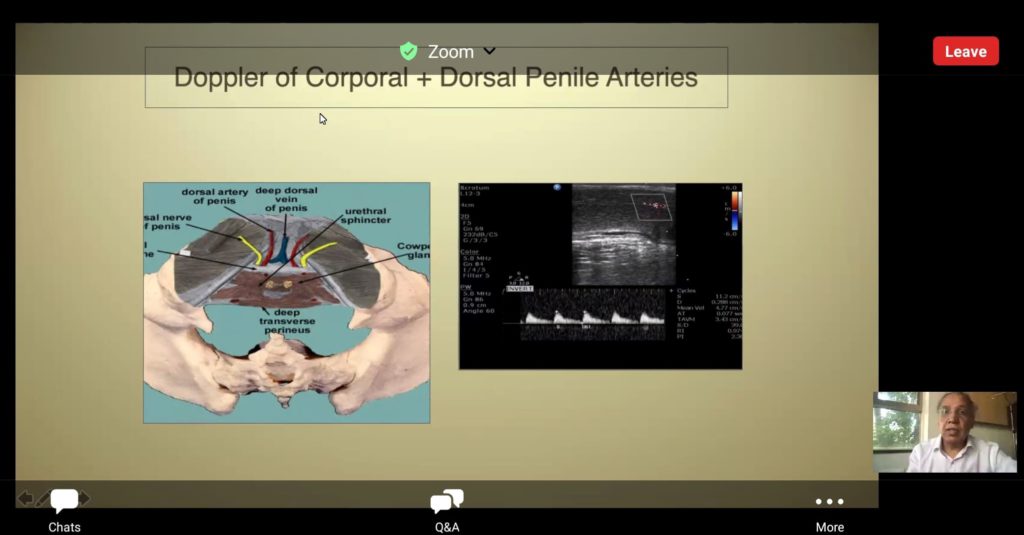
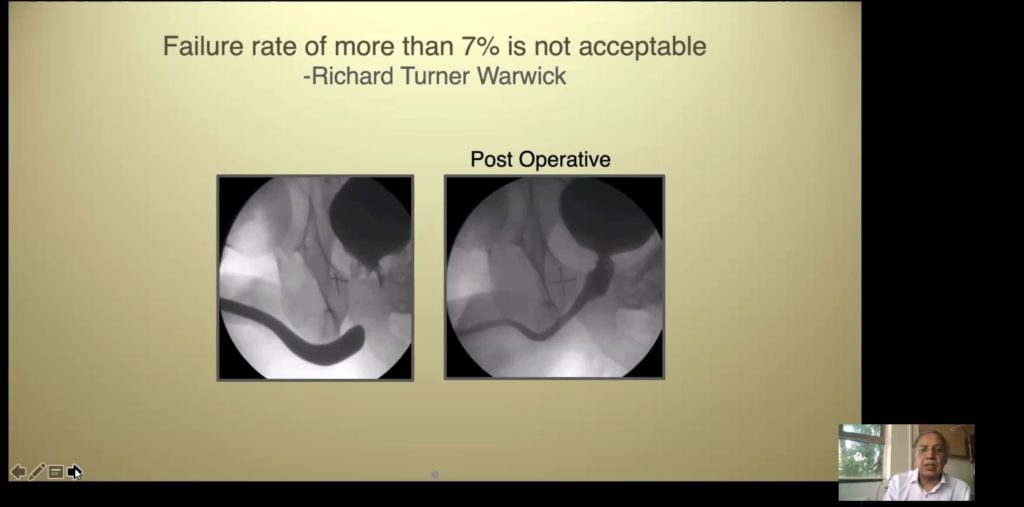
The last lecture was given by Dr. Paksi Satyagraha on the Challenges and Benefits of Establishing a Center of Reconstructive Urology. He first enumerated the challenges being situated in Indonesia. The speaker also compared both Philippines and Indonesia being the same in terms of the challenge that has to be overcome for the Reconstructive urology to flourish. With the challenges, he also enumerated points on how to overcome this such as having a good support system, teamwork, training young residents and colleagues in reconstructive urology to provide this specialized service throughout the country. He ended his lecture by telling the audience that, still, the most important outcome if for the best of our patient.
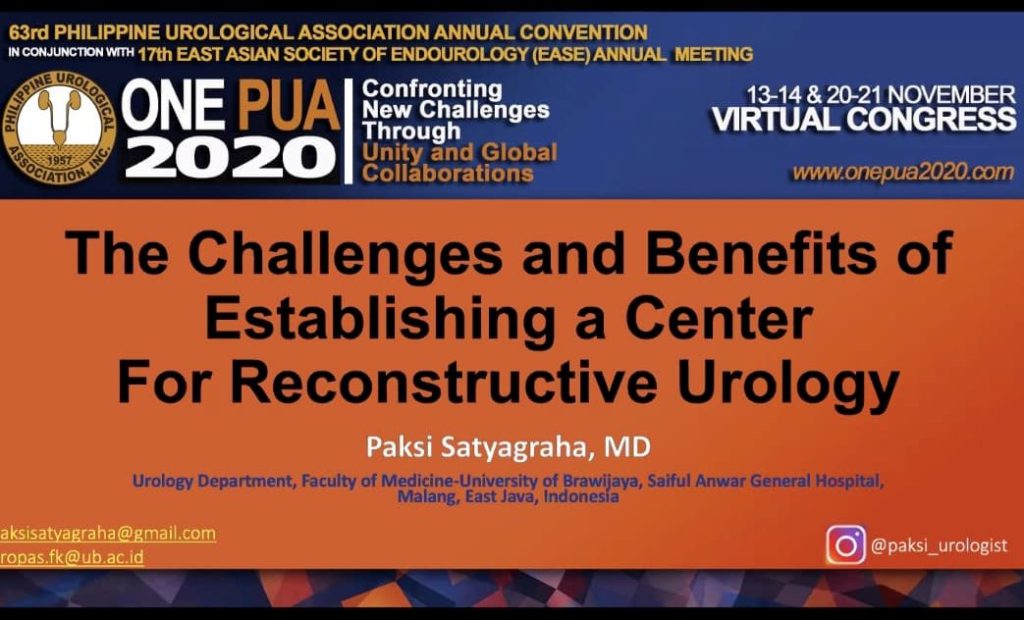



The plenary was concluded with the induction of some of our consultants to the International Society of Reconstructive Urology. Notable inductees included were Dr. David Bolong, Dr. Eduardo Gatchalian, Dr. Lester Garcia, and much more. Indeed, the 5th plenary clearly shows that Reconstructive Urology is one of the exciting specialties that is starting to make waves in the field of Urology here in the Philippines.
MABUHAY PUA!

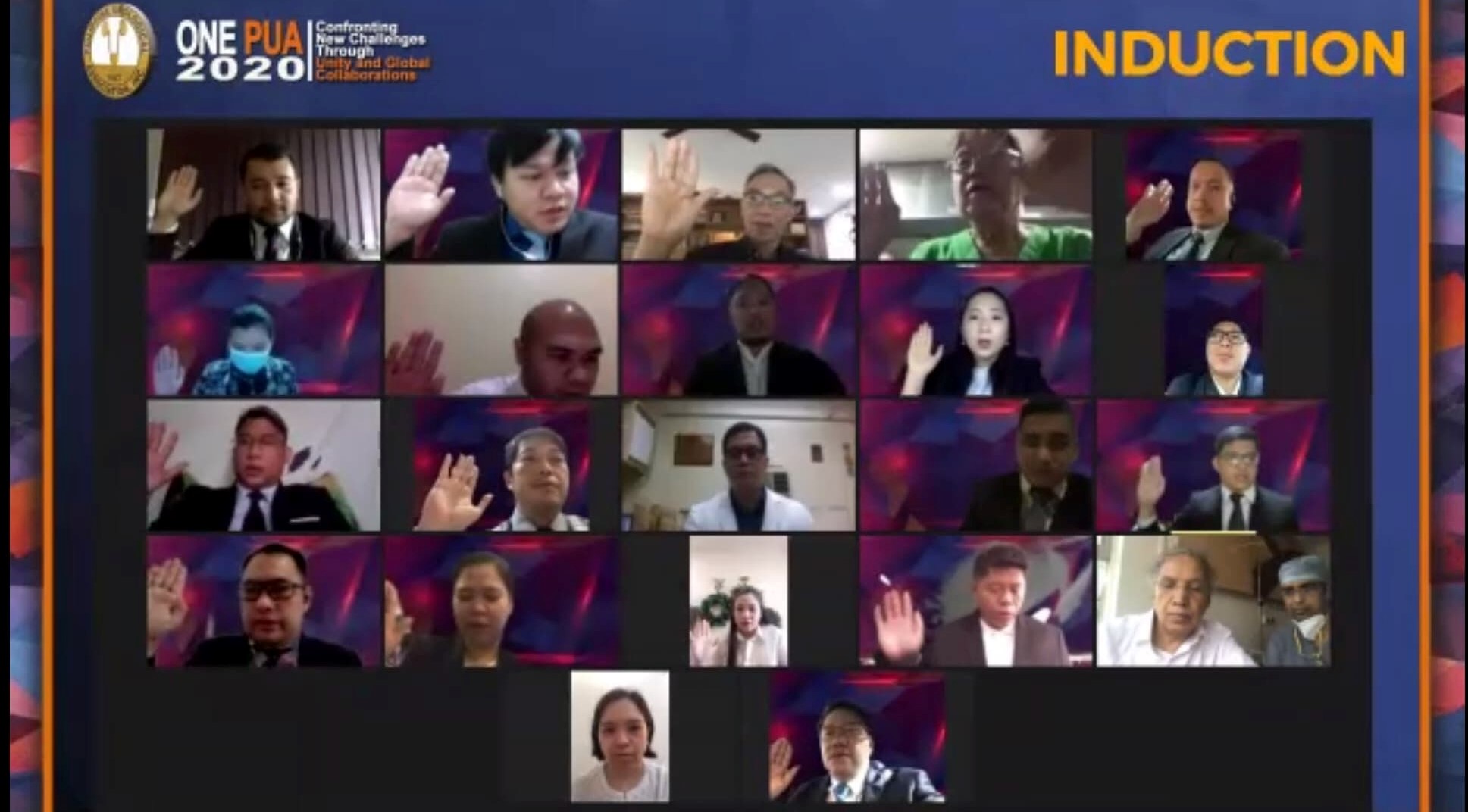

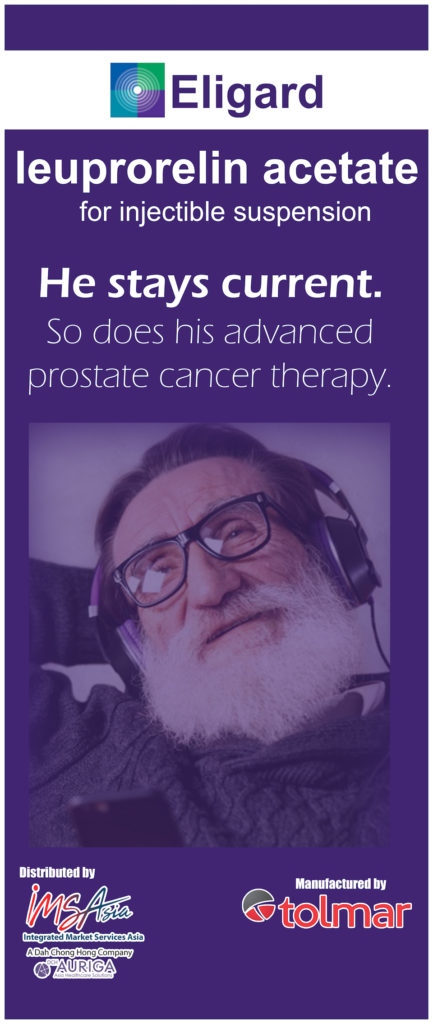
0 Comments